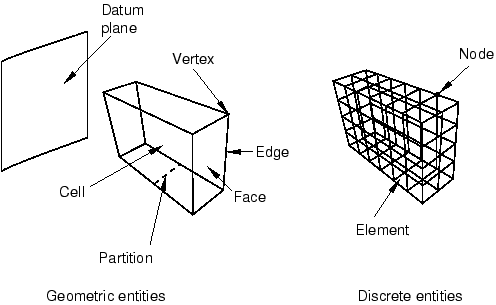What objects can you select from the viewport? | |||||
|
| ||||

You can select objects in the viewport during certain procedures, such as those listed below:
Creating sets and surfaces
Partitioning a part instance
Editing a feature
Seeding a part instance for meshing
Creating or editing a display group composed of elements or nodes
Color coding elements in your model
Creating a node list path through your model
Creating a load
You can also select objects in the viewport in advance of selecting a procedure. If you make selections prior to selecting a procedure, Abaqus/CAE does not limit your selections. When you select a procedure, Abaqus/CAE filters any selections that you made and keeps only those selections that are appropriate for the procedure. For more information, see Selecting objects before choosing a procedure.
If you select objects as part of a procedure, in most circumstances Abaqus/CAE only allows you to select objects that are appropriate for the current procedure. For example, the first step in partitioning an edge is selecting the edge of interest. Therefore, at this point in the procedure you can select only an edge; you cannot select a cell, a face, or a vertex. Messages in the prompt area guide you through the steps of a procedure and indicate which types of objects are available for selection. You can select only objects that are part of the current display group.
In some circumstances Abaqus/CAE cannot determine which objects are appropriate for selection and does not limit your selection. For example, when you are creating a set, you can select from cells, faces, edges, and vertices to include in the set and Abaqus/CAE allows you to select any of these objects. If you make an ambiguous selection from the viewport during a procedure, Abaqus/CAE allows you to cycle through the available objects until the desired object is selected. This ambiguity is described in Cycling through valid selections. You may find it easier to use the selection filters to limit the type of object you can select. For more information, see Using the selection options.
Many procedures to define attributes (interactions, constraints, loads, boundary conditions, predefined fields, and engineering features) allow you to select objects from the viewport to identify the region on which to apply the attribute. The default behavior for these procedures is to create a set or surface that contains the selected objects. You can change this behavior by toggling off the option to create a set or surface in the prompt area. A default name is provided in the prompt area, but you can enter a new name.